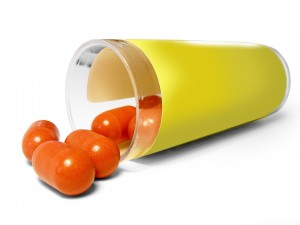The initial treatment of increased blood sugar is practicing a healthy lifestyle including diet and exercise, loose weight if you are overweight. When lifestyle changes fail to control your blood sugar, your health care provider may start you on medications that can lower blood sugar. The following are the types of the most commonly used medications:
♦ Biguanides: Metformin (glucophage) is the only member of this group. It helps lower blood sugar by decreasing the amount of glucose released from the liver and by making our muscles more sensitive to insulin. This is usually taken up to 3 times a day. There can be diarrhea or indigestion with this treatment but this side effect is usually lessened when metformin is taken with food.
♦ Sulfonylureas: This type of oral medication triggers increase production of insulin from the pancreas. Because of this action, it has a higher chance of resulting into very low blood sugar (hypoglycemia). The newer generation of sulfonylureas such as glimepiride (Amaryl) has a lower chance of hypoglycemia compared to the first generation sulfanylurias. Weight gain may be one of the side effects with sulfonylureas.
♦ Alpha-glucosidase inhibitors: Acarbose (Precose) and Miglitol (Glyset) represent this group. They act by blocking the digestion of starch into glucose inside the small intestines. They are taken before the first meal of the day. Because of the delay in the breakdown of starch, they may cause flatulence or diarrhea.
♦ Thiazolidinediones: Pioglitazone (Actos) belongs to this class. Like metformin, this drug makes the body more responsive to insulin and lowers the amount of glucose being produced by the liver. It has been linked to increase in heart failure in some individuals. It is taken once to twice daily.
♦ Meglitinides: Like sulfonylureas, this type of medication also triggers the release of insulin from the pancreas. It is taken before meals to avoid hypoglycemia. Compared to sulfonlyureas, the effect of meglitinides is short lived. Repaglinide (Prandin) and Nateglinide (Starlix) belong to this class.
♦ DPP IV inhibitors: This type of medication prolongs the effect of GLP-1 by blocking the enzyme that degrades it. GLP 1 lowers blood sugar when the patient takes food. There is a very low chance of experiencing hypoglycemia with DPP IV inhibitors. The currently available DPP IV inhibitors are Linagliptin (Tradjenta), Allogliptin (Nesina), Sitagliptin (Januvia), Vildagliptin (Galvus) and Saxagliptin (Onglyza).
♦ SGLT2 blockers: This is the newest class of medication used to lower blood sugar in Type 2 Diabetes. Its action is mainly on the kidneys. By blocking the process of reabsorption of glucose in the kidney, it allows spillage of blood sugar into the urine. Other benefits seen in this class of medication are weight loss and slight improvement in blood pressure.
Some of these medications should not be taken by pregnant patients or those with liver or kidney failure.
There is no single medication that is best in treating diabetes.
Most of the times, two or more medications can be combined to achieve adequate control of the blood sugar. When oral medications fail to control blood sugar, your health care provider may advise you to start insulin therapy.

